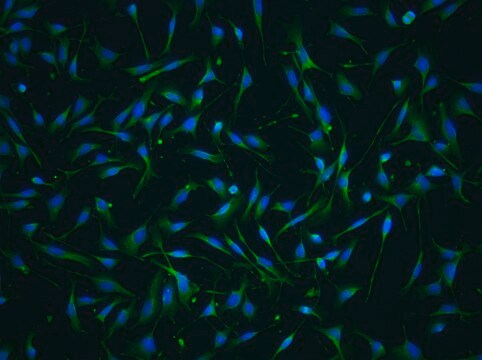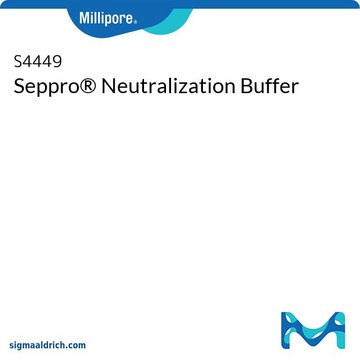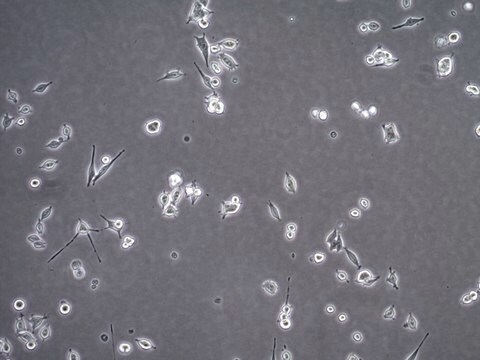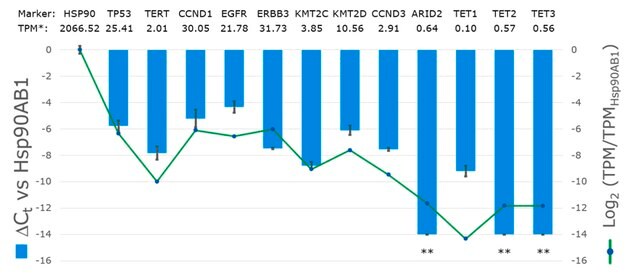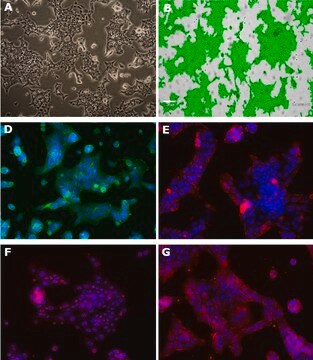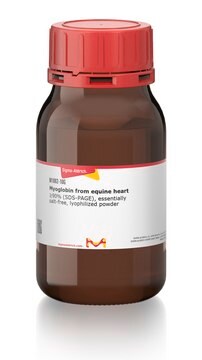SCC226
YUMM1.4 Mouse Melanoma Cell Line

Sinónimos:
YUMM1.4 Mouse Melanoma Cell Line, Yale University Mouse Melanoma 1.4 cell line, Yale University Mouse Melanoma cell line
About This Item
Productos recomendados
biological source
mouse
Quality Level
packaging
vial of ≥1 x 10^6 vial (viable cells per vial)
manufacturer/tradename
Millipore
technique(s)
cell culture | mammalian: suitable
shipped in
liquid nitrogen
storage temp.
−196°C
Application
- Each vial contains > 1X106 viable cells.
- YUMM1.4 cells are tested negative for infectious diseases by a Mouse Essential CLEAR panel by Charles River Animal Diagnostic Services.
- Cells are verified to be of mouse origin and negative for inter-species contamination from rat, chinese hamster, Golden Syrian hamster, human and non-human primate (NHP) as assessed by a Contamination CLEAR panel by Charles River Animal Diagnostic Services.
- Cells are negative for mycoplasma contamination.
Features and Benefits
Target description
The YUMM1.4 cell line was produced to be more experimentally relevant. The cell line was derived by backcrossing important alleles into C57BL/6J mice. The mice were interbred to produce human-relevant genetically defined mouse models that could then be used to generate cell lines. Melanomas were induced by applying 4-hydroxytamoxifen to induce Cre-lox allele recombination. Cells were then mechanically and enzymatically dissociated from the removed tumor. The melanoma lines generated from this procedure retained important human melanoma characteristics useful for studying disease progression.
The YUMM1.4 cell line is driven by Braf activation, Pten inactivation, and Cdkn2a inactivation.1 The cell line is positive for the common melanoma marker, MelanA. The cells are syngeneic with C57BL/6J mice and are very tumorigenic in vivo.
Source
Cell line was derived from a 4-hydroxytamoxifen-induced melanoma tumor in a male C57BL/6 mouse into which mutations from the Braf/Pten genetically-engineered mouse model had been introduced via backcrossing.
References
1. Meeth, K., Wang, J. X., Micevic, G., Damsky, W., & Bosenberg, M. W. (2016). The YUMM lines: a series of congenic mouse melanoma cell lines with defined genetic alterations.Pigment cell & melanoma research,29(5), 590-597.
Storage and Stability
Other Notes
Disclaimer
Storage Class
10 - Combustible liquids
wgk_germany
WGK 2
flash_point_f
Not applicable
flash_point_c
Not applicable
Certificados de análisis (COA)
Busque Certificados de análisis (COA) introduciendo el número de lote del producto. Los números de lote se encuentran en la etiqueta del producto después de las palabras «Lot» o «Batch»
¿Ya tiene este producto?
Encuentre la documentación para los productos que ha comprado recientemente en la Biblioteca de documentos.
Nuestro equipo de científicos tiene experiencia en todas las áreas de investigación: Ciencias de la vida, Ciencia de los materiales, Síntesis química, Cromatografía, Analítica y muchas otras.
Póngase en contacto con el Servicio técnico


